We tell about the peculiarities of mastic, intricacies of application for different bases and the process of applying walls.
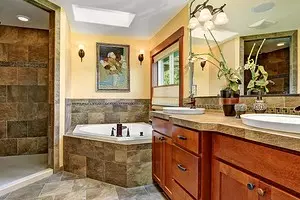
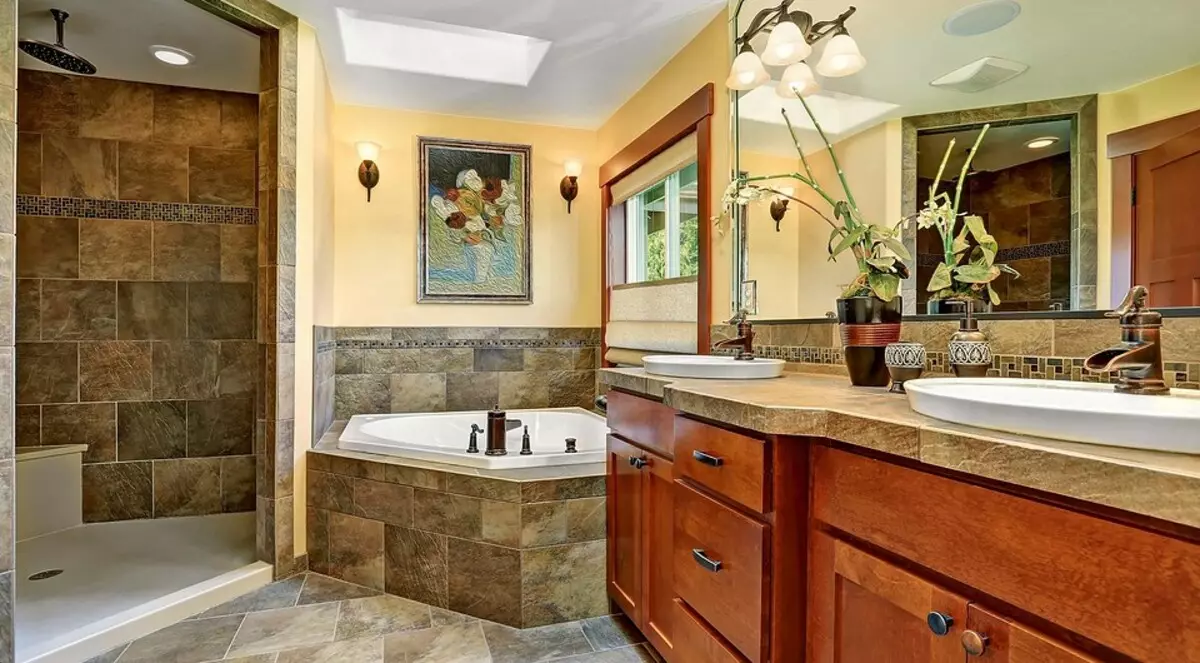
Water in the wet rooms of the apartment with daily procedures and in emergency situations hits the walls and gender. Moreover, it is not even waterproof ceramic tiles and plastic panels cannot guarantee absolute protection against moisture penetration. The role of the reliable obstacle for water, steam and condensate, which will protect the decorative finish and carrying structures from premature damage, will perform a layer of waterproofing. Since the effects are periodic, and not constant, such as, for example, in a pool bowl, it does not need to be redundant durable.
Features of mastic
It is convenient for this purpose to use ready-made polymer waterproofing mastics. This is usually aqueous dispersion based on synthetic resins that do not contain organic solvents. As it follows from the name, they do not require complex and dirty preparatory work, except for mixing the mixture. Plastic composition is easy to distribute with a brush or roller base. After hardening, it turns into a thin (0.5-1 mm) and a durable layer that reliably protects the base from the negative exposure to water and at the same time passes the water vapor, allowing the base to breathe. Pay attention to the range of operating temperatures of mastic. Most suitable for balconies, garages, seasonal cottages, and some only for heated premises.
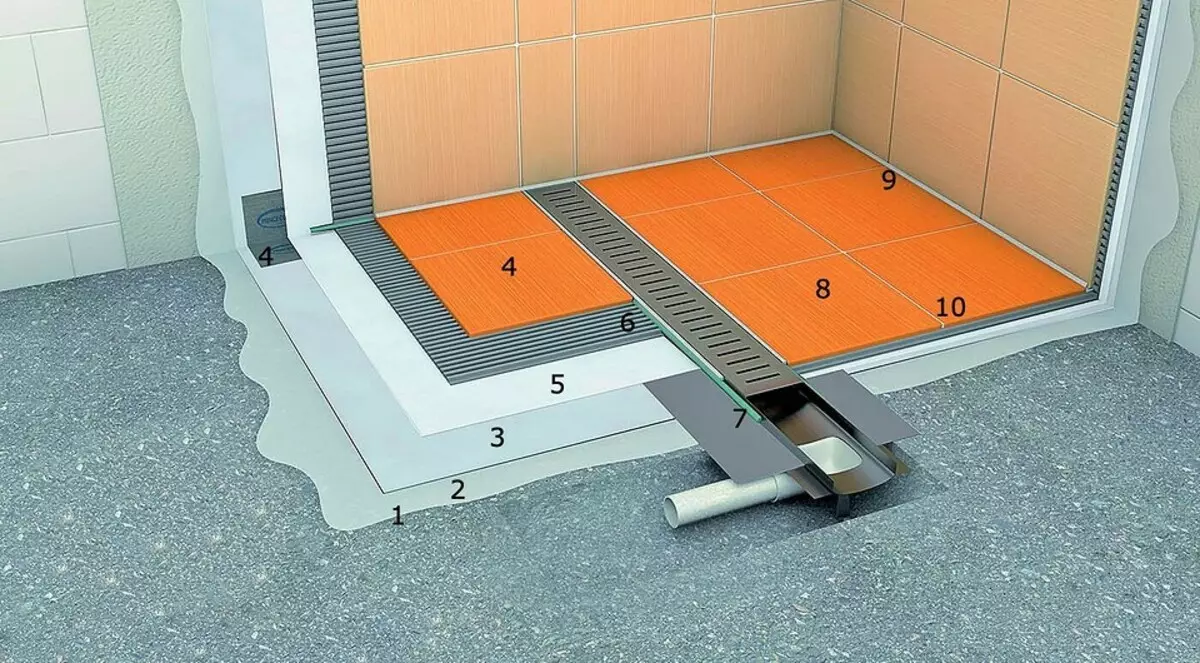
Scheater Waterproofing Scheme: 1 - Base; 2 - soil; 3 - waterproofing mastic; 4 - elastic ribbon; 5 - second layer of mastic; 6 - Tile glue; 7 - polyethylene cord compensator; 8 - ceramic tile; 9 - silicone sealant; 10 - grout for seams
Pros and cons
pros
- Do not require effort and time to prepare material for work.
- Gently protect building structures from water.
- Create an elastic film suitable for insulation of complex, deformable bases.
- Economical, quickly dry out, which in the aggregate reduces the time of repair work.
- Have a high adhesion to the grounds from different materials.
- Thixotropic, well lay on horizontal and vertical surfaces.
- Environmentally safe when working and operation.
Minuses
- High price.
- The scope is often limited only by internal work.
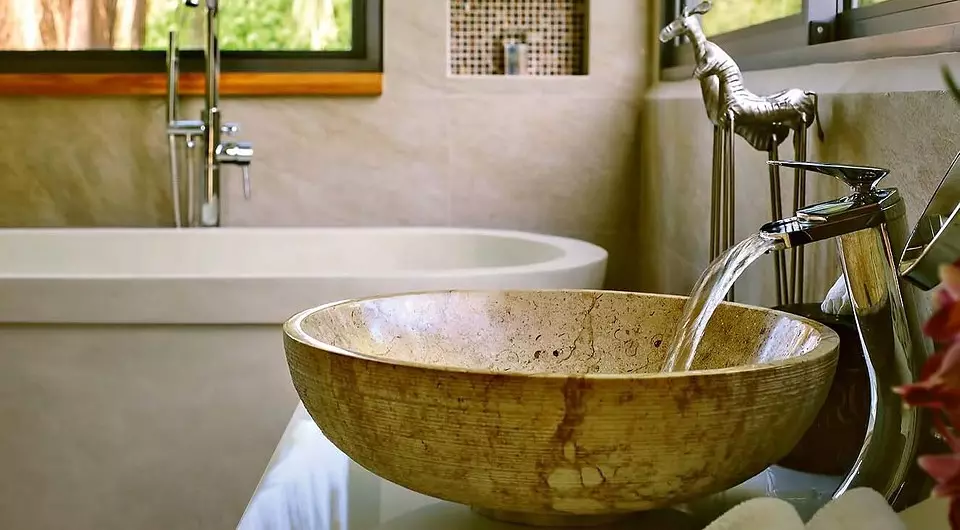
Application of mastic for different reasons
Ready-made polymer mastic applied on non-deformable bases (concrete, foam and aerated concrete, brick, cement, cement-sand and cement-lime, gypsum, from PGP), as well as on complex deforming (GKL, GVL, SML, CSP, OSB, wooden ). Qualitatively performed insulation of polymer mastic will prevent the detrimental effect of water on very common gypsum bases: from drywall, plaster plates or aluminated plaster plaster. While its absence can lead to a decrease in their strength and warping. In this case, the waterproofing layer is made across the entire area of the floor and walls (to the ceiling). It works as a peculiar binding element between rigid tile glue and a sufficiently soft base, warning bundles.
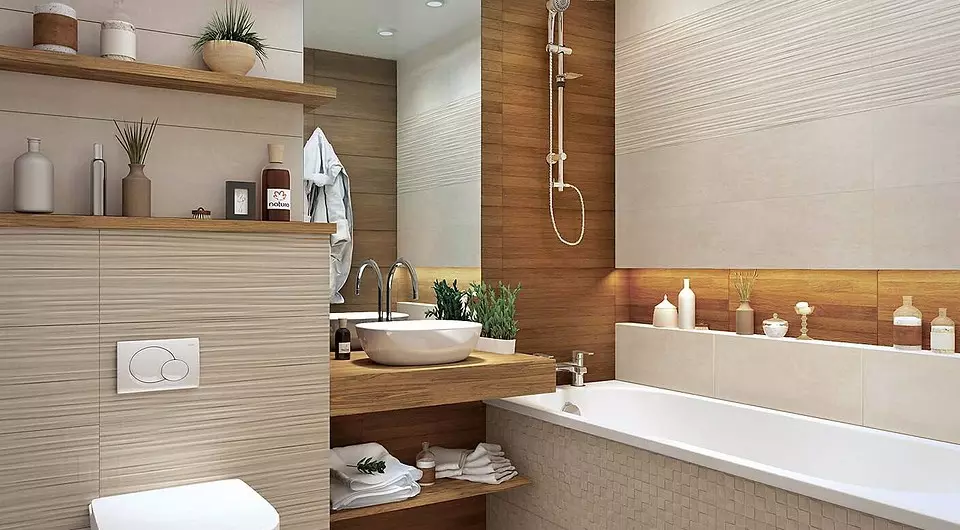
When working, it is important to take into account the slower drying of the mastic under reduced temperatures and high humidity.
If the walls of the bathroom are made of brick, concrete are aligned with cement plaster, etc., then the mastic is usually first covered by the floor, and then it will be filled with 20 cm on the walls so that the waterproof "trough" is obtained. In an emergency, it will not give water to leak to neighbors from below. Be sure to water the base of the walls behind the shower cabin, the bathroom, in the installation places of the shower watering can, the mixer - everywhere where water can fall on the facing.
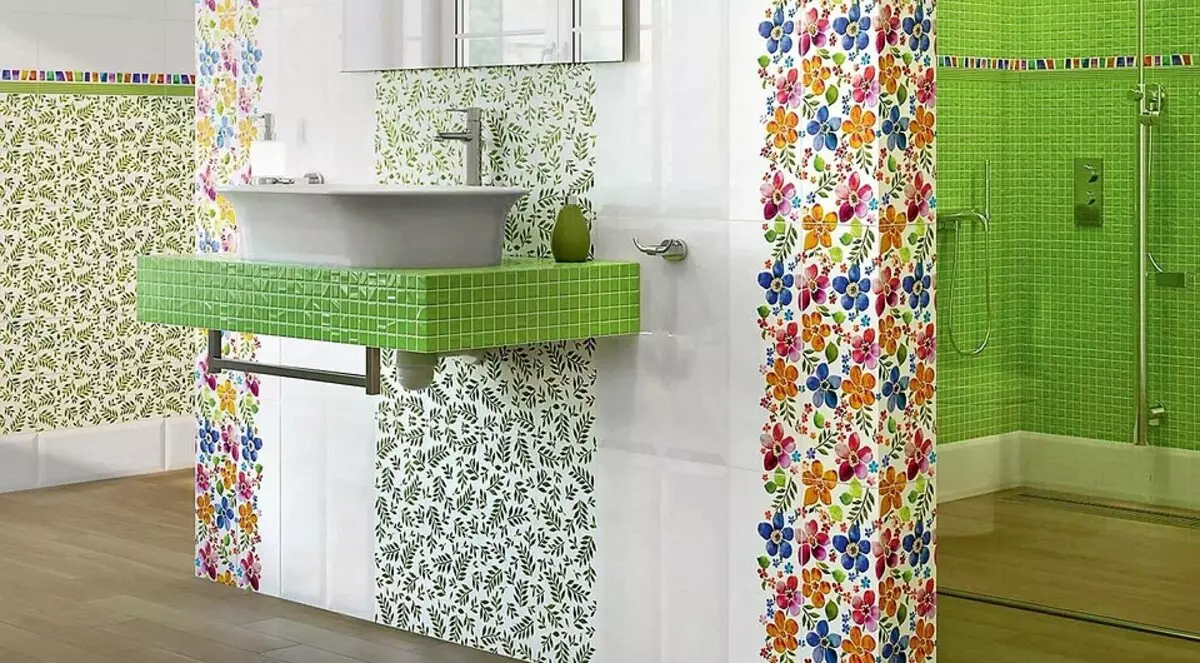
Ready waterproofing mastics can be applied on the grounds that are equipped with various floor heating systems
Important nuances of application
To reliably seal vertical and horizontal adjoins: a wall to a wall, a wall to the floor, a line of connecting heterogeneous materials, pipe outputs, cables, drain wells and mounting holes - use special accessories. First of all, insulating tape. Durable and elastic, it is withstanding significant loads on the gap, even large than mastic itself. The shakes of the floor and walls are sicking with a ribbon. Special angular elements are inserted into the corners, on the conclusions of the pipes - cuffs. The complex system of waterproofing, ribbons, corners, cuffs level deformations and base movements and does not let water.
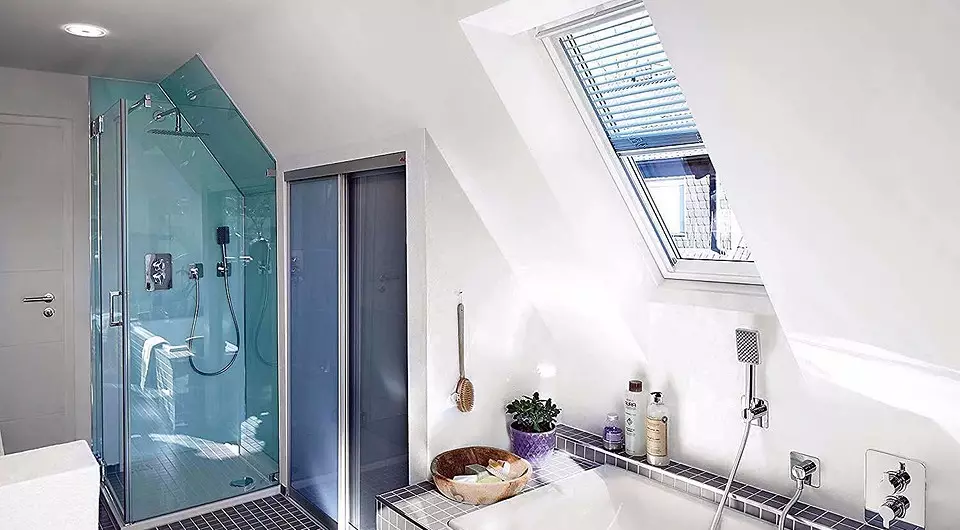
Waterproofing works are carried out in dry conditions, at a base temperature and air from 5 to 30 ° C, air humidity up to 80%
Waterproofing mastic is applied by two continuous layers. To make it easier to detect and timely eliminate skipping and flaws, many manufacturers produce compositions of different colors for the first and second layers. You should not distribute the mastic very thin layer, wanting to treat as many square as possible. Remember that the thinner there will be a layer, the smaller stretching it can withstand. The optimal consumption manufacturer indicates packaging.
In addition to creating a waterproof seamless coating, waterproofing mastic is also suitable for protection from damage to water sensitive materials: gypsum fiber sheets, drywall, plaster plaster.
Waterproofing walls, covered with moisture-resistant GLK
- The base from GLC is ground PCI Gisogrund (BASF)).
- For sheets of sheets, angles, wall adjunctions / Paul stuck the elastic sealing tape PCI PECITAPE OBJEKT, and on the pipe protruding from the wall - Sealing cuffs PCI PECITAPE using waterproofing Mastics PCI Lastogum.
- After that, the first layer of gray mastic is applied with a ribbon and cuffs. After drying it (about 1 hour), the second layer of white mastic is applied so that the gray layer does not transform).
- When the waterproof layer finally calms, you can start laying the tile.
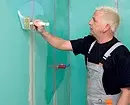
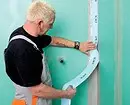
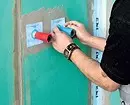
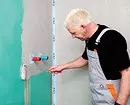
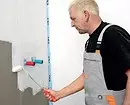
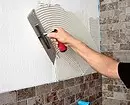
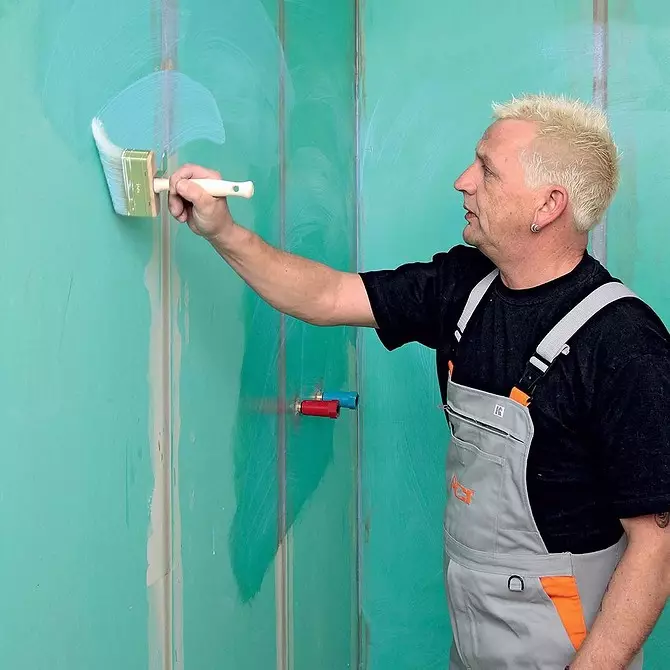
Primication of the base from GLC
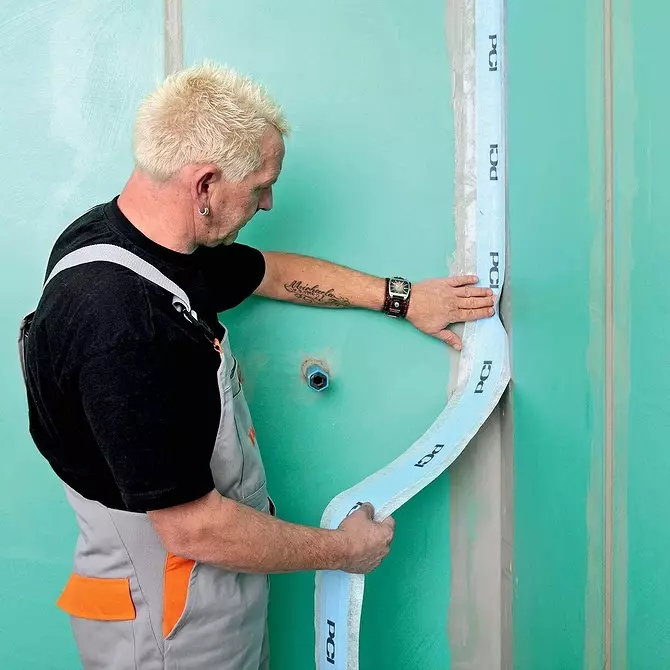
Sticking the elastic sealing tape
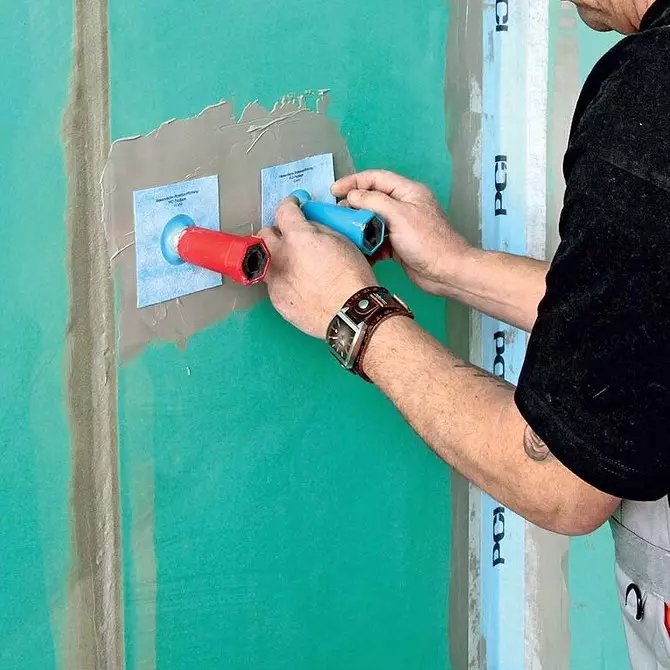
Sealing cuffs
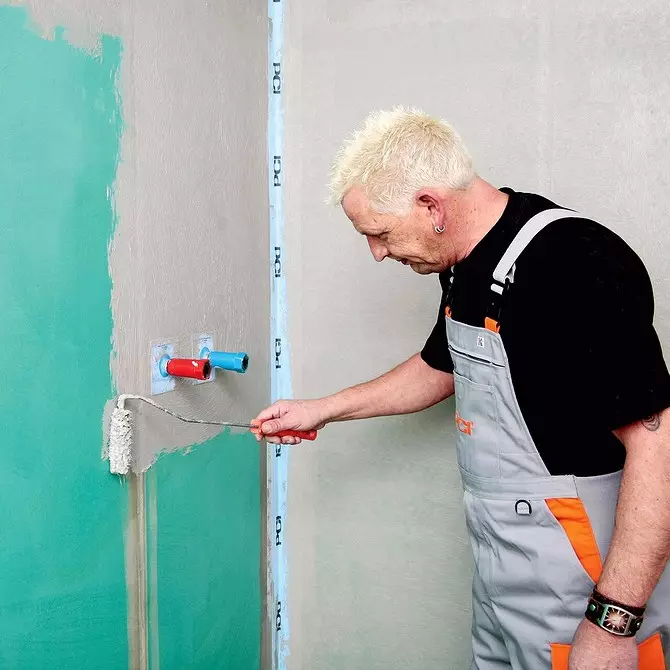
Application of the first layer of mastic
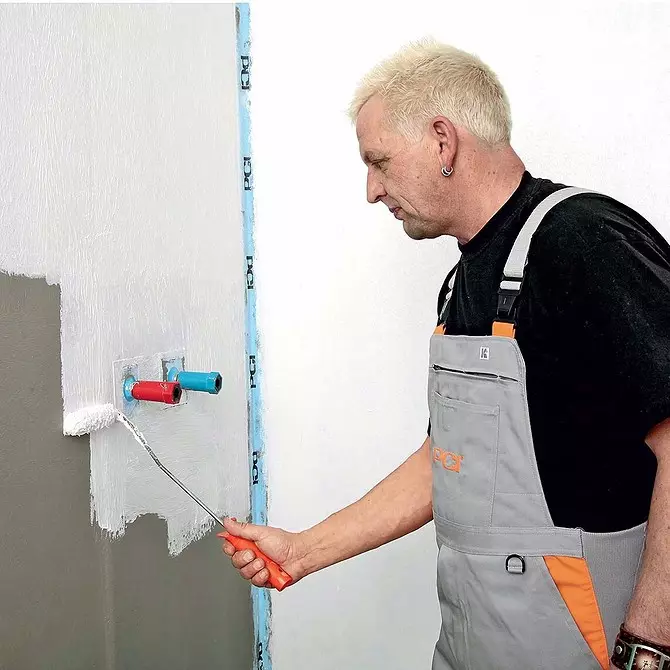
White mastic applying
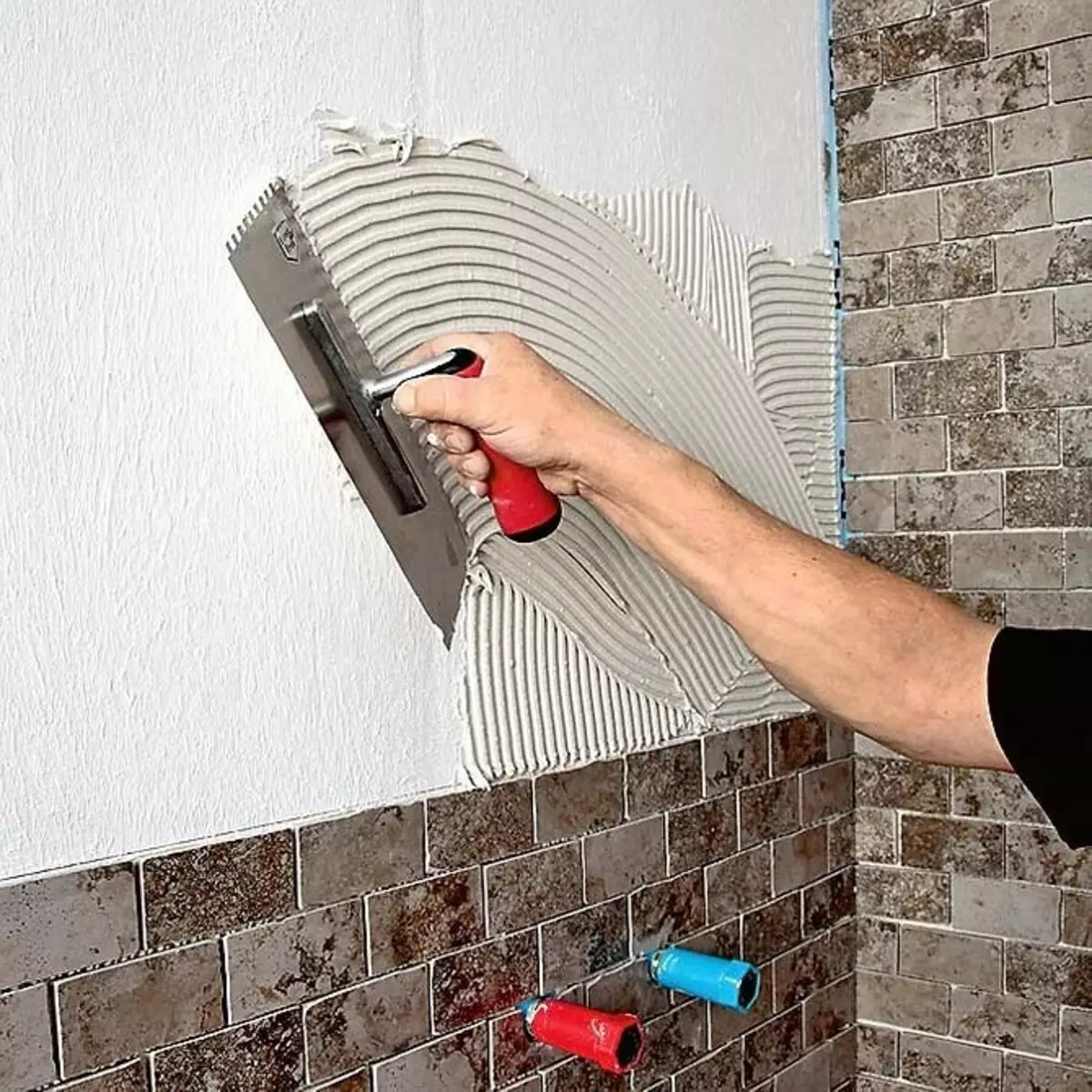
Laying tiles
Waterproofing shower with a ladder in the floor
- Dry, purified from unfinished particles The base is ground fiberpool primer (kiilto).
- The process of applying waterproofing starts with complex areas: angles, adjoins, zones around the drain hole. They are missing with fiberpool mastic and attach a hardening tape.
- For the drain hole, two pieces use, laying them perpendicular to one on another. Then distribute mastic throughout the treated surface and give it to dry before changing the color of the mastic (about 2 hours). After that, they apply the second layer.
- After about 6 hours, the density of the surface is checked. Places where mastics are not enough, processed again and give dry. The minimum thickness of the waterproofing film for the floor is 0.5 mm, for the walls - 0.4 mm.
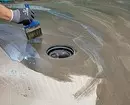
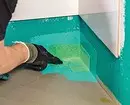
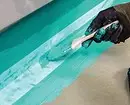
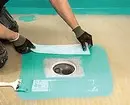
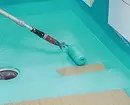
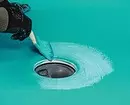
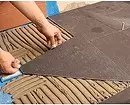
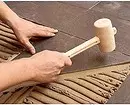
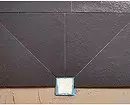
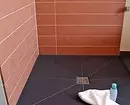
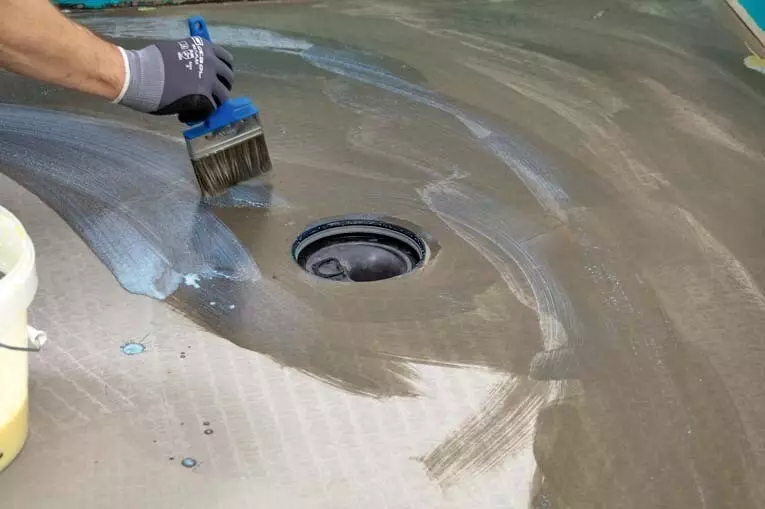
Primer base
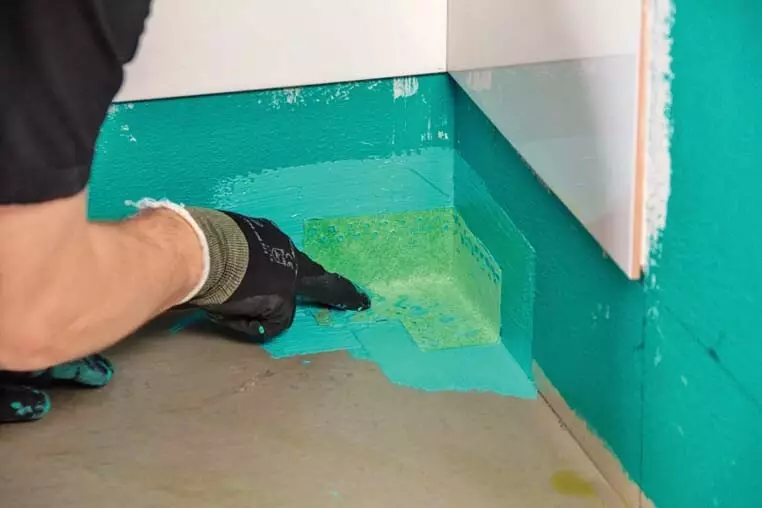
Application of waterproofing in complex corners
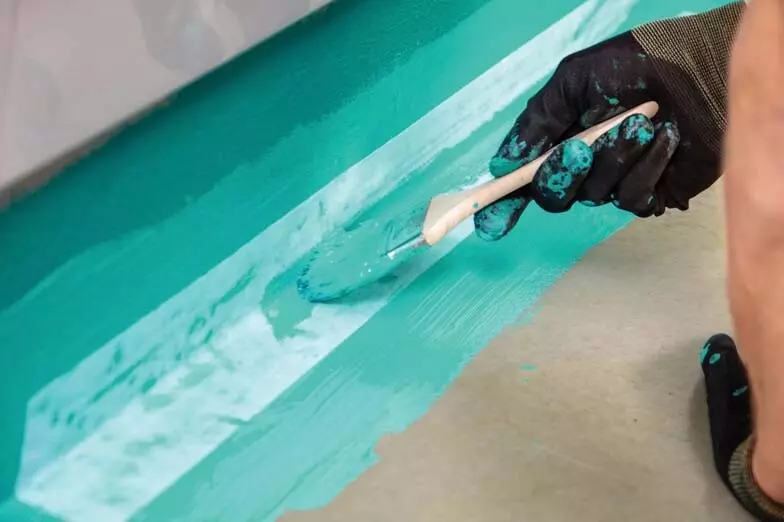
They are missing with fiberpool mastic and attach a hardening tape.
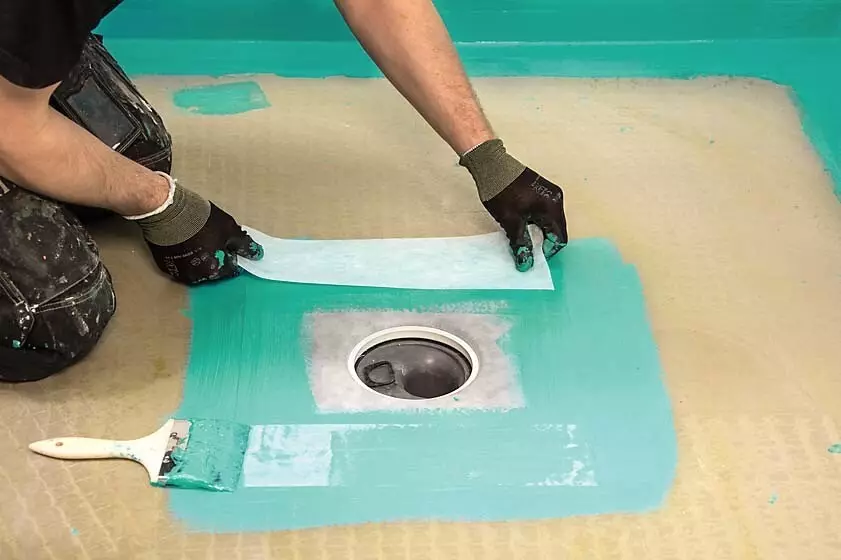
For the drain hole use two pieces.
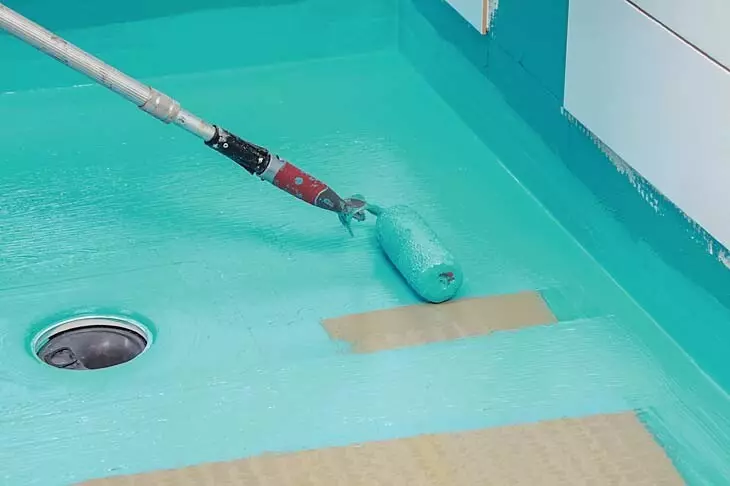
Distribution of mastic over the entire surface
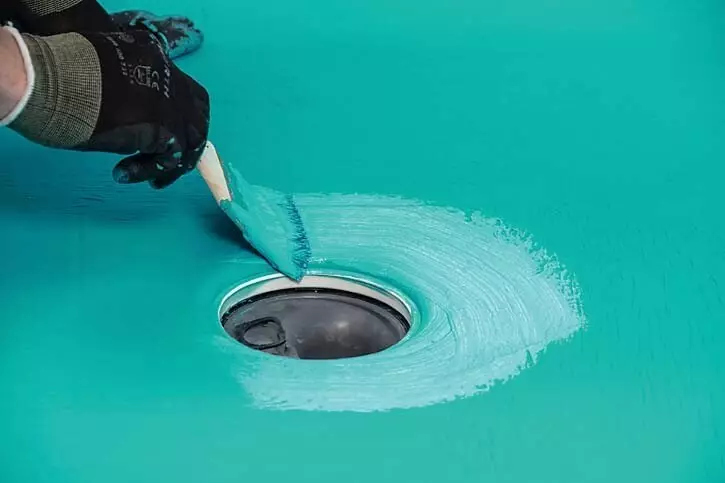
Treatment by the second layer
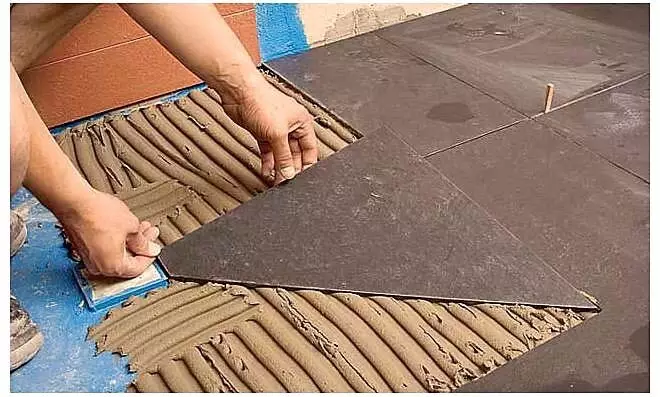
The base of the floor in the shower with a lady gives a bias of 2-3% to the catchment collector. Do it during the arrangement of the screed, and not with the help of tiled glue. The tiles are adjacent to the lastta cut.
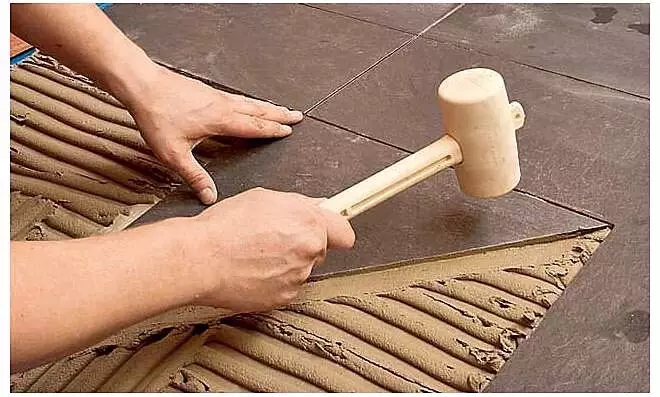
The glue is applied with a toothed spatula on the base and laid tiles. Their position is adjusted by a rubber hammer.
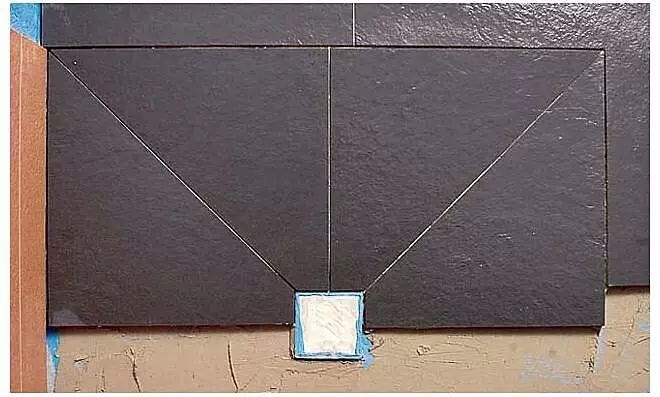
For the floor in the shower, they pick up a tile with a high sliding coefficient from R9 and above DIN 51130).
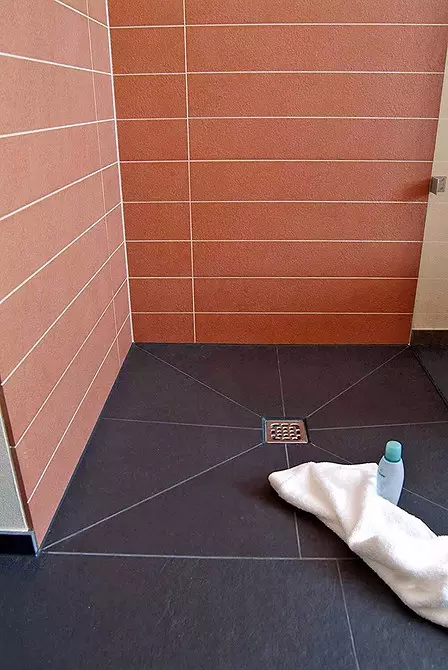
Review of waterproofing mastics from different manufacturers
| Name | Flakelandicht | Weber.tec 822. | "Akvaskrin HA64" | Ceresit CL51. | Baumacol Proof. | Fiberpool |
| Manufacturer | Knauff | Saint-Goben | "Best" | Henkel | Baumit. | Kiilto. |
| Total thickness of the insulation layer after drying, mm | 0.8. | Not less than 0.8. | 0.9 | 1-1.5 | Not less than 1. | 0.4-0.5 |
| Operating temperature range, ° C | From -20 to +80 | From -35 to +70 | From +5 to +40 | Up +70. | From +5 to +30 | Up to +60. |
| Drying time between layers, h | 3. | 3. | 3. | 2. | 2. | 2. |
| Drying time before laying tiles, h | 12 | 24. | 12 | sixteen | 24. | 6. |
| Packaging, kg. | five | eight | 4.5 | five | 7. | 7. |
| price, rub. | 1 324. | 2 262. | 1 482. | 1 530. | 3 223. | 3 160. |
